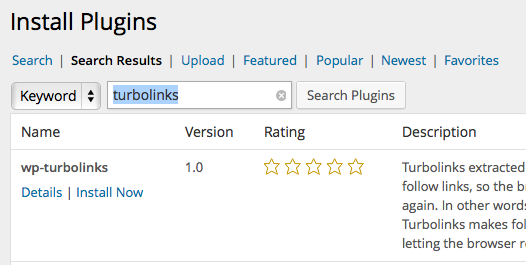Turbolinks and WordPress
Rails Turbolinks is pretty cool, right? I thought it would be pretty cool to use it on WordPress, too.
There are probably a lot of bugs, and it probably doesn’t work well with JavaScript-heavy sites. I’ve included the jQuery compatibility layer, but it’s still not perfect. Use at your own risk.
To install, just search the WordPress plugin repository for “turbolinks”

Or, available for download here:
http://wordpress.org/plugins/wp-turbolinks/ Contributors welcome!!!
